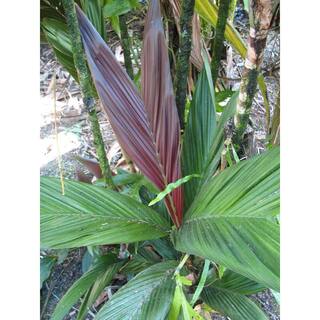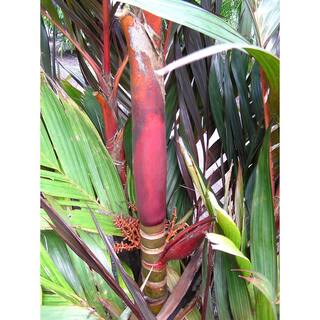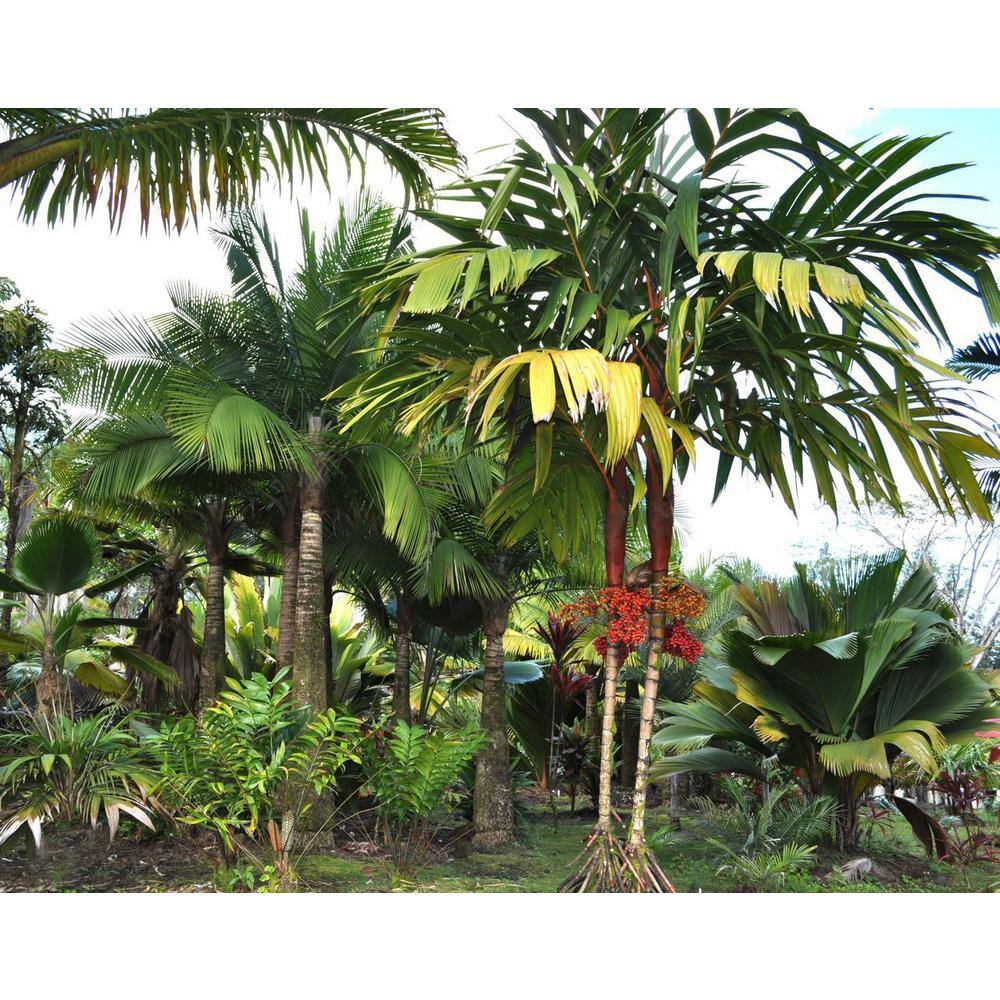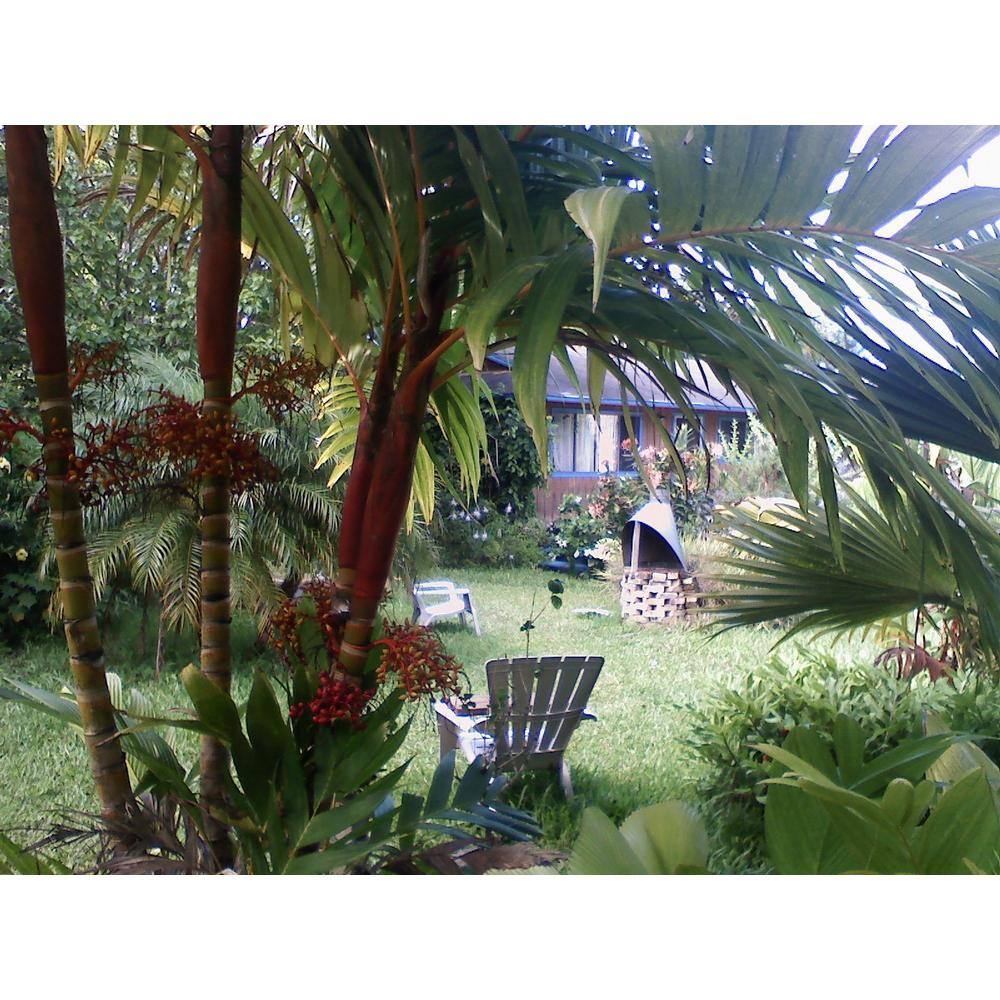It would be hard to find a more morphologically diverse species in the palm kingdom. This gorgeous palm varies from a profusely suckering red crownshafted plant with maroon leaves, to a single trunked orange version with green leaves, and everything in between. It has been reported that there is substantial color variation depending on elevation, with the more colorful plants coming from higher elevations. Observations, at least in cultivation, indicate the maroon variety suckers more readily than the orange form. Clumping individuals will attain widths up to 15 ft./4.5 m and heights of 20 ft. to 25 ft/6 m to 8 m. This palm will often times exhibit distinct arial or stilt roots emerging from the 3 in. to 4 in./7 cm to 10 cm. Dia trunks. These palms are monoeceious with small yellow/orange flowers emerging from beneath the crownshaft that bear orange to dark red ovoid fruit similar to Areca catechu. Although tropical in nature, this palm appears able to withstand periodic low temperatures, but will eventually succumb to persistent coolness, often times only surviving until January in the So. They prefer a sheltered, consistently moist and humid location, with more shade in less humid environments. A rich well draining soil would appear to be the best. It fruits profusely at a young age, and the seeds volunteer easily. The rate of growth can be surprisingly quick when given suitable growing conditions. Cold Hardiness Zone: 10a.
Would be hard to find a more morphologically diverse species in the palm kingdom, this gorgeous palm varies from a profusely suckering red crownshafted plant with maroon leaves, to a single trunked orange version with green leaves, and everything in between, it has been reported that there is substantial color variation depending on elevation, with the more colorful plants coming from higher elevations
Although tropical in nature, this palm appears able to withstand periodic low temperatures, but will eventually succumb to persistent coolness, often times only surviving until January in the So. California winter, it could probably survive close to nightime freezing, if the days remained on the warm side, as is often the case in parts of Florida
Prefer a sheltered, consistently moist and humid location, with more shade in less humid environments, a rich well draining soil would appear to be the best, it fruits profusely at a young age, and the seeds volunteer easily, the rate of growth can be surprisingly quick when given suitable growing conditions, cold hardiness zone: 10a
Palms are monoeceious with small yellow/orange flowers emerging from beneath the crownshaft that bear orange to dark red ovoid fruit similar to areca catechu
Has a single smooth trunk ringed with old leaf scars, about 20 ft. tall and 4 in. Dia







Comment